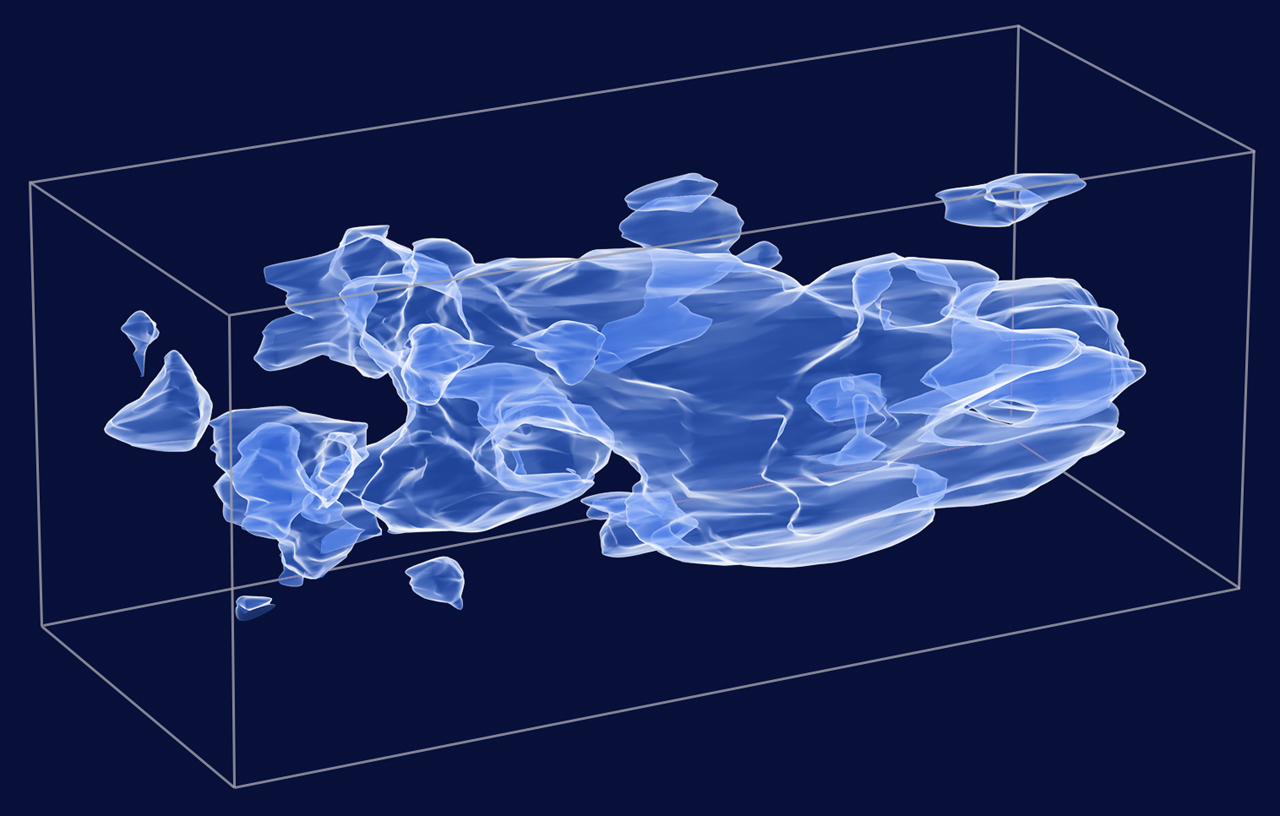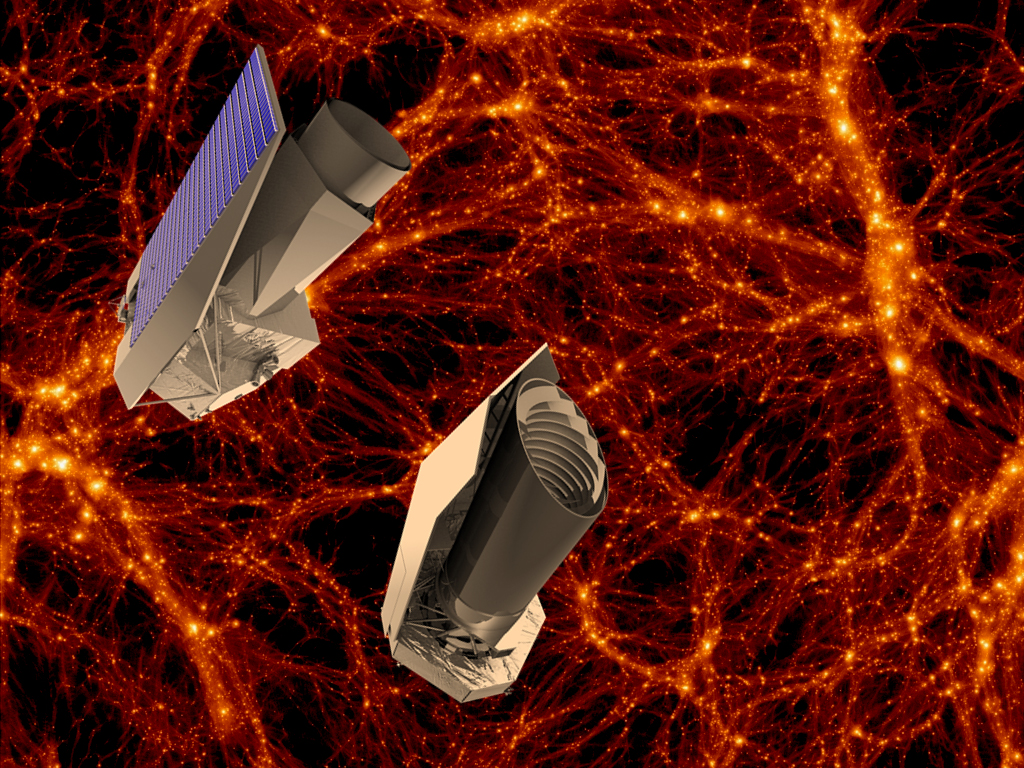The missions are part of ESA's Cosmic Vision programme and were originally selected from more than 50 missions. They will be launched between 2017 and 2019.
Solar Orbiter has now been officially adopted by ESA and will go forward immediately. Euclid has been selected but has to complete its study phase before it can be fully adopted in June 2012.
Dr David Williams, Chief Executive of the UK Space Agency, said: "With strong UK involvement in these ambitious projects, we are set to maintain our country's position as a leader in space science within Europe. These exciting missions are a prime example of collaboration between academia and the UK high-tech industry and will not only further our knowledge of space science but could help us unlock some of the greatest mysteries of our Universe."
Solar Orbiter is designed to travel closer to our own star than any previous Sun-watching mission. It will use an elliptical orbit to take it up to the Sun's higher latitudes to image, for the first time ever, the polar regions of our star. This special path will also allow Solar Orbiter to keep pace with the Sun's rotation so that it can track specific features below it for several weeks at a time.
As it travels around the Sun, bombarded by the harsh solar wind, Solar Orbiter will carry out in-depth studies of the connections between the Sun and interplanetary space that could provide major breakthroughs in our understanding of how the inner Solar System is driven by solar activity. The unique design of the spacecraft will allow it to withstand the scorching heat on the surface facing the Sun and the cold of space on the opposite surface, which would always remain in shadow.

Three-Dimensional distribution of Dark Matter in the Universe
(Credit: NASA, ESA and R Massey (California Institute of Technology))
Professor Tim Horbury from Imperial College London said: "Solar Orbiter is Europe's mission to the Sun. It will give us our first good view of the Sun's polar regions and by travelling closer in than Mercury, it will give us a unique close-up view of the Sun's atmosphere and how it blows off into space, past the Earth and into the far solar system."
The UK is already playing a major role in the design of Solar Orbiter as EADS Astrium Limited - based in Stevenage, Hertfordshire - is leading the industrial study of the spacecraft under contract from ESA. Meanwhile, UK scientists (University College London, Imperial College London and STFC Rutherford Laboratory) are involved in four out of the ten instruments which have already been selected by ESA for deployment on the spacecraft to study the Sun. Professor Chris Owen from UCL's Mullard Space Science Laboratory is the Principal Investigator for the Solar Wind Analyser while Dr Tim Horbury from Imperial College London is the Principal Investigator for the spacecraft's Magnetometer.

Artist's depiction of two Euclid concepts
(Credit: ESA)
Euclid will address key questions relevant to fundamental physics and cosmology, namely the nature of the mysterious dark energy and dark matter. At the heart of Euclid is a massive optical digital camera - one of the largest such cameras put into space - and UK astronomers are leading efforts to design and build this new instrument.
"This camera can take pictures of the sky more than 100 times larger than Hubble can", comments Professor Mark Cropper of Mullard Space Science Lab, UCL, who is project scientist for the VIS camera. "Each VIS frame is the equivalent of nearly 300 HDTV screens, and one arrives every 15 minutes. It will image half of the sky in six years, reaching out to the distant parts of the Universe."
Current theory suggests that dark energy and dark matter dominate the ordinary matter of stars and planets. In particular, dark energy has been proposed to explain the observation that - contrary to expectations - the expansion of the Universe seems to be faster now than it was billions of years ago. Euclid and the VIS instrument will effectively look back in time approximately 10 billion years, covering the period over which dark energy seems to have accelerated the expansion of the Universe, and capture the light from distant galaxies to map their distribution and reveal the underlying 'dark' architecture of the cosmos.
Nine UK institutions (University College London, Durham, the Institute for Astronomy in Edinburgh, UK ATC, Oxford, Portsmouth, Hertfordshire, the Open University and the University of Cambridge) have involvement in Euclid's instrument development or data / processing / analysis activities. In addition to this participation, Astrium UK is already involved in Euclid for the European scientific community and the UK company e2v will likely supply the CCD detectors for the VIS camera, meaning Euclid will be a substantial contract for many UK space companies.
UK and Cosmic Vision
Solar Orbiter
The UK is playing a major role in the development of Solar Orbiter with UK teams from University College London, Imperial College London and Rutherford Appleton Laboratory involved in four out of the ten instruments and Astrium UK holding the industrial lead. Principle Investigators from UCL's Mullard Space Science Laboratory and Imperial College London lead the development of the Solar Wind Analyser (SWA) and Magnetometer (MAG) respectively.
In situ instruments with UK involvement:
SWA (Solar Wind Analyser) will use three separate sensors to measure the different elements of the solar wind and characterise their behaviour under different solar conditions. MSSL of the University of College London will lead the development of this instrument suite.
MAG (Magnetometer) will have two sensors located on a deployable boom in the shadow of the spacecraft, i.e. away from the Sun, enabling it to sample the magnetic field in situ and providing important diagnostic information. Imperial College London will lead the development of this instrument.
Remote sensing instruments with UK involvement:
EUI (Extreme Ultraviolet Imager) will be a suite of imaging telescopes that will provide images of the hot and cold layers of the solar atmosphere and of the solar corona showing the dynamics in fine detail and providing the link between the solar surface and outer corona. MSSL of the University College London is a Co- Principal Investigator for this instrument.
SPICE (Spectral Imaging of the Coronal Environment) is a telescope with a grating spectrograph and two active pixel sensor detectors that will provide images of the solar disk and corona. SPICE will be able to study features both on the surface and out in the corona and to look at the connection between them. STFC's RAL Space has proposed to ESA to lead an international team to build this instrument and to have a strong scientific role. This would further enhance the UK's role in the mission.
Euclid
Euclid is planned for launch in 2019, with ESA funding the spacecraft, launch and operations, while the UK and other national partners (Austria, Denmark, Italy, Finland, France, Germany, Netherlands, Norway, Romania, Spain, Switzerland) funding the scientific instruments and the ground segment activities. The UK PI for Euclid is Professor Mark Cropper of the Mullard Space Science Laboratory, UCL.
In addition to the nine UK institutions involved in the instrument development and data / processing / analysis activities, there are many scientists across the UK involved in the scientific definition of Euclid and will have access to the data. Across Europe, the Eucild consortium contains over 800 scientists from 110 institutions.
Euclid is designed to understand the origin of Universe's accelerating expansion that physicists and astronomers refer to as "Dark Energy". Current observations show that dark energy comprises more than 70% of the matter-energy of the present-day Universe and is therefore driving its evolution. Euclid will observe several hundreds of million galaxies over a large fraction of sky and will track the observational signatures of dark energy, dark matter and gravity on the geometry of the Universe and the cosmic history of structure formation.
By measuring the apparent shapes and the distribution of galaxies in the Universe, astronomers will then derive what is dark energy and whether general theory of relativity is still a valid gravitation theory on scales beyond billions of light years.
For more information please contact:
RAL Space Enquiries
